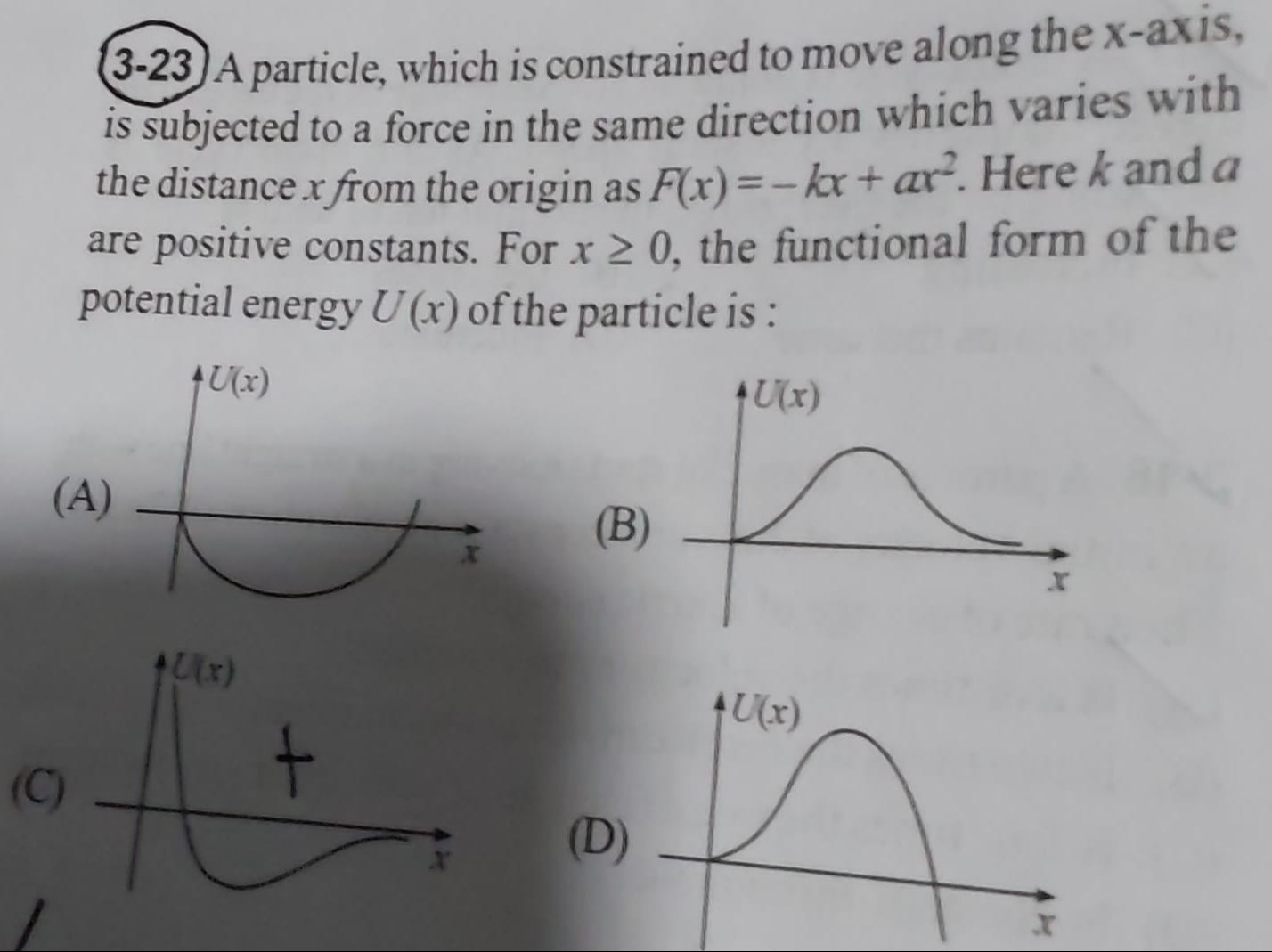Question
Question: A particle, which is constrained to move along the x-axis, is subjected to a force in the same direc...
A particle, which is constrained to move along the x-axis, is subjected to a force in the same direction which varies with the distance x from the origin as F(x)=−kx+ax2. Here k and a are positive constants. For x≥0, the functional form of the potential energy U(x) of the particle is :

A graph starting at (0,0) with a horizontal tangent, increasing to a maximum, and then decreasing, with a change in concavity from up to down.
A symmetric bell curve that does not go to −∞.
A double potential well.
A graph starting at (0,0) with a horizontal tangent, increasing to a maximum, then decreasing, with concavity that does not match the derived function.
A graph starting at (0,0) with a horizontal tangent, increasing to a maximum, and then decreasing, with a change in concavity from up to down.
Solution
The relationship between force F(x) and potential energy U(x) is given by F(x)=−dxdU(x). Given the force F(x)=−kx+ax2, where k and a are positive constants. To find the potential energy, we integrate the negative of the force with respect to x: U(x)=−∫F(x)dx U(x)=−∫(−kx+ax2)dx U(x)=∫(kx−ax2)dx U(x)=k∫xdx−a∫x2dx U(x)=k2x2−a3x3+C
Setting C=0 by choosing U(0)=0, we get U(x)=21kx2−31ax3.
For x≥0:
- U(0)=0. The graph starts at the origin with a horizontal tangent.
- Equilibrium points are where F(x)=0: −kx+ax2=0⟹x(ax−k)=0. So, x=0 and x=k/a are equilibrium points.
- The second derivative of potential energy is dx2d2U=dxd(kx−ax2)=k−2ax.
- At x=0, dx2d2U=k>0, indicating a stable equilibrium (local minimum).
- At x=k/a, dx2d2U=k−2a(k/a)=k−2k=−k<0, indicating an unstable equilibrium (local maximum).
- Thus, U(x) increases from x=0 to x=k/a and decreases for x>k/a.
- The concavity changes at k−2ax=0, which is at x=k/(2a). For 0≤x<k/(2a), the function is concave up. For x>k/(2a), the function is concave down.
Option A correctly depicts a graph starting at the origin with a horizontal tangent, increasing to a maximum at x=k/a, decreasing thereafter, and showing a change in concavity from up to down.
